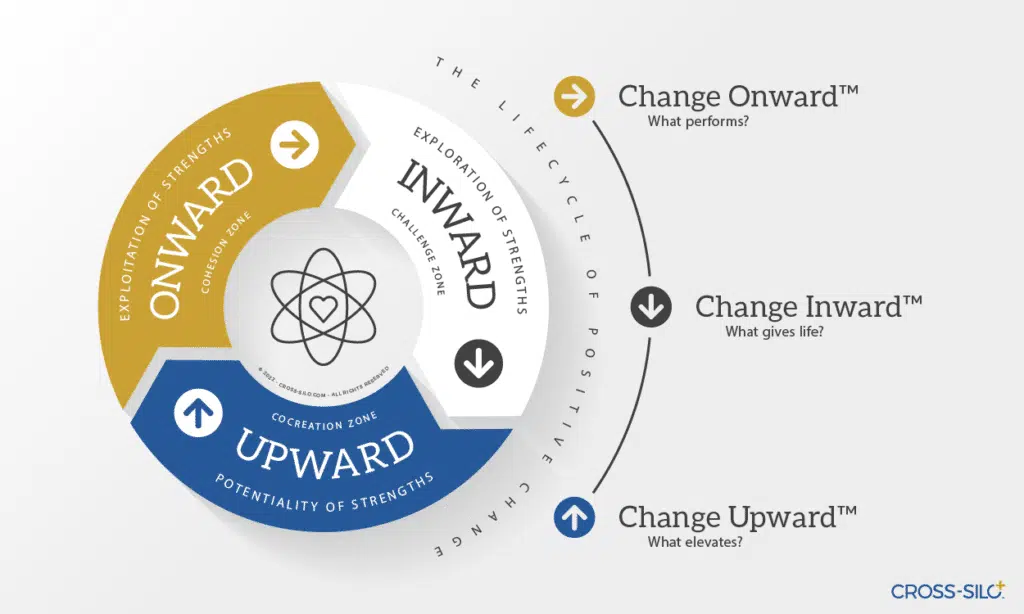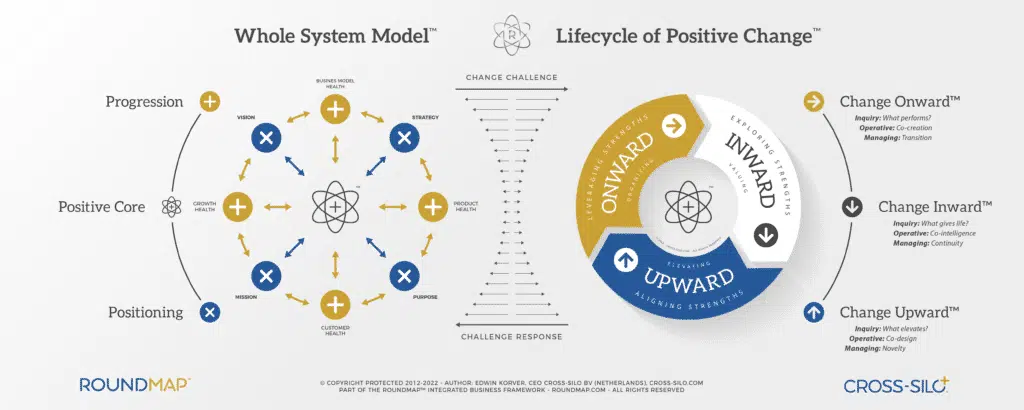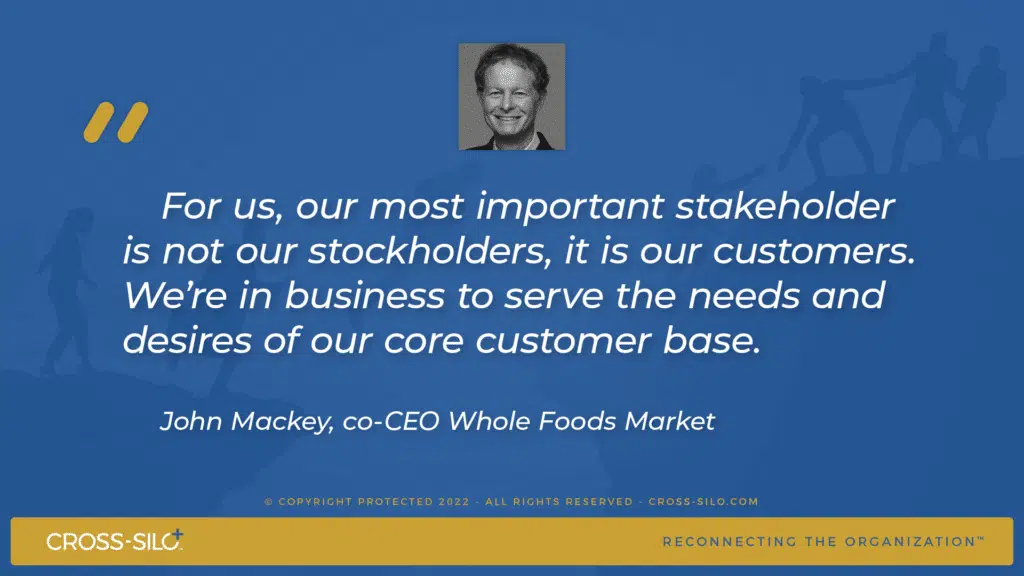We’re a strong advocate of Positive Change. However, we noticed that the 4-D cycle (right), used in Appreciative Inquiry (A) interventions, may have an image problem. The first stage, the Discovery, captures everyone’s imagination, but once we discuss the Dream, top executives tend to lose interest. So, we decided to create a different perspective, while still respecting the essence and approach of AI.

The Lifecycle of Positive Change™
We decided to use our understanding of Positive Change and created the Lifecycle of Positive Change™ to keep the attention on the essence of Positive Change, which is to drive engagement, build resilience and grow the generative capacity of the entire organization by exploring, aligning and leveraging strengths.
It is a lifecycle because Organization Development and Change in particular is an ongoing process. After all, change is constant. Appreciative Inquiry implies a discovery of what gives life to the organization.
In the middle of the framework, you’ll find the Positive Core, i.e., everything that defines the organization’s unique qualities such as successful strategies, best practices, wisdom, skills, talents, culture, embedded knowledge, social capital, product strengths, innovations, patents, copyrights, assets, values, customer relationships, visions, stories, heroes, traditions, core competencies, and elevated thoughts.
The Lifecycle of Positive Change™ consists of three stages:
Change
Inward™
Change
Upward™
Change
Onward™
Exploration of Strengths. Entering the Challenge Zone.
- What is the Change Agenda?
- What are our unique strengths, resources, skills, and assets?
- What gives life to the organization?
Potentiality of Strengths. Entering the Cocreation Zone.
- What can be achieved when at our best?
- How will this elevate the organization?
- What future can we bring about when at our best?
Exploitation of Strenghts. Entering the Cohesion Zone.
- How to integrate the challenge response?
- What qualities do we need to develop?
- How do we measure progress?
Focus: past and present
Focus: forward-looking
Focus: future
Ergo, start by looking inside the organization to appreciate what went right in the past; imagine how more of these unique qualities could lift the organization to greater heights; and finally, describe what the future looks like when these qualities reached their full potential.
You won’t find ‘change backward’ in the Lifecycle of Positive Change because when organizations decide to focus on fixing the problems of the past, that is where they will be: stuck in the past.
Compared to the 4-D cycle: Inward is Discovery, Upward is Dream/Design, Onward is Deliver.
Triggers
The reason for entering the Challenge Zone could be a change in internal or external conditions, aspirations, or expectations. These enforced or self-emposed triggers demand a Positive Change response, determining the Change Agenda and the Affirmative Topics.
Formula for Positive Change
Consequently, the formula for Positive Change is:
Lifecycle of Positive Change™ = Change Inward™ + Change Upward™ + Change Onward™
Onward and upward!
You may be familiar with the expression ‘Onward and upward,’ which means: ‘Becoming increasingly successful, continuing to advance or make progress; improving to a brighter, happier future, especially after some misfortune or unpleasant incident (i.e. a trigger for a change)’.
The practice of Appreciative Inquiry or Positive Change suggests to first look within the organization to discover what gives life to the organization. By combining inward, upward, and onward, we believe we’ve provided a powerful recipe for bringing the best to life ─ over and over again.
4-D Cycle
The Lifecycle of Positive Change™ does not discard the 4-D cycle. Its detailed approach holds merit to the AI Advisory Team that has to do most of the work. For the whole system, the company at large, the Inward, Upward, and Onward Sequence is a more practical high-potential framework.
It may seem like we’ve eliminated the Dream but we haven’t really; the dream is inherent to the interviews, which takes part during Change Inward stage. From a deeper and broader understanding of what the company at large is capable of doing, people find the confidence, hope, and audacity to generate bold ideas of what could be possible ─ beyond incremental improvements.
Questions?
If you have any questions on how the Lifecycle of Positive Change™ can help your organization to create and deliver its best value from the best your people have to offer, don’t hesitate to contact us.
Continue reading: ROUNDMAP & Positive Change





























